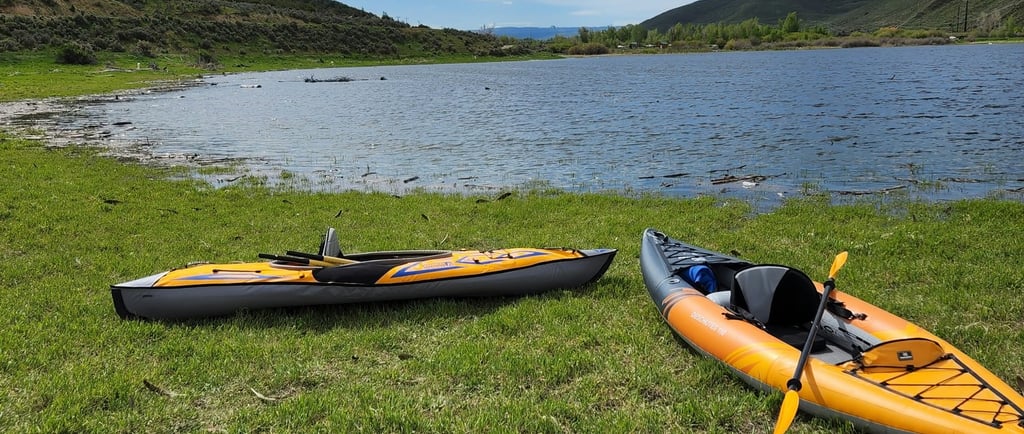The Pros and Cons of Using Inflatable Kayaks for Backcountry Camping
BACKCOUNTRY


Inflatable kayaks have become a popular choice for outdoor enthusiasts, offering a portable and convenient alternative to traditional hardshell kayaks. If you're considering an inflatable kayak for backcountry camping, there are several factors to weigh before making your decision. Here's a look at the pros and cons to help you decide if an inflatable kayak is the right option for your adventure.
Pros:
1. Portability One of the biggest advantages of inflatable kayaks is their portability. These kayaks can be deflated, rolled up, and packed into a compact carrying bag, making them easy to transport on backpacking trips or while traveling to your camping site. This is a huge benefit for backcountry campers who need to keep their gear light and compact.
2. Lightweight Inflatable kayaks are generally much lighter than their hardshell counterparts, which is ideal for long-distance travel. You can easily carry an inflatable kayak over rough terrain or pack it on a plane or bus without worrying about heavy, bulky equipment.
3. Easy Storage When not in use, inflatable kayaks take up minimal space. Whether you're storing them in your tent or at home, they can be deflated and packed away, leaving you with more room for other camping gear.
4. Durability Modern inflatable kayaks are built with high-quality, puncture-resistant materials, making them durable enough to handle a variety of conditions. As long as you're careful about sharp objects and rough terrain, an inflatable kayak can serve you well for many seasons.
5. Versatility Inflatable kayaks are often designed to be stable and easy to maneuver, making them ideal for calm waters, rivers, and lakes, which are commonly found in backcountry camping areas. Many models are also suitable for tandem paddling, making them great for couples or groups.
Cons:
1. Less Performance While inflatable kayaks are stable and user-friendly, they typically don't perform as well as hardshell kayaks, especially in rougher water conditions. If you're planning to paddle in fast-moving rivers or ocean surf, you may find that an inflatable kayak lacks the speed and responsiveness of a traditional kayak.
2. Vulnerability to Punctures Despite being made from tough materials, inflatable kayaks can still be susceptible to punctures from sharp rocks, branches, or other hazards in the environment. While most kayaks come with repair kits, it's something to consider when navigating more rugged or challenging waters.
3. Setup Time Inflatable kayaks require inflation before use, which can take several minutes with a manual pump or longer with a foot pump. While the process is simple, it can be a bit of a hassle when you're eager to get on the water, especially after a long day of hiking or camping.
4. Stability in Wind In windy conditions, inflatable kayaks can be less stable than hardshell kayaks, as they are often more affected by gusts. This can make paddling in open water more challenging, particularly if you’re not accustomed to controlling the kayak in variable weather.
5. Storage and Maintenance While easy to store, inflatable kayaks require more attention when it comes to maintenance. You'll need to ensure they are properly cleaned and stored to prevent damage. Over time, the material can degrade from UV exposure or improper storage, so regular care is essential to ensure longevity.
Inflatable kayaks can be a great choice for backcountry camping if you prioritize portability, lightweight design, and convenience. However, they may not be the best option for more rugged, performance-based water adventures. Weighing the pros and cons based on your specific needs and the conditions you expect to encounter will help you make the best decision for your next camping trip.
